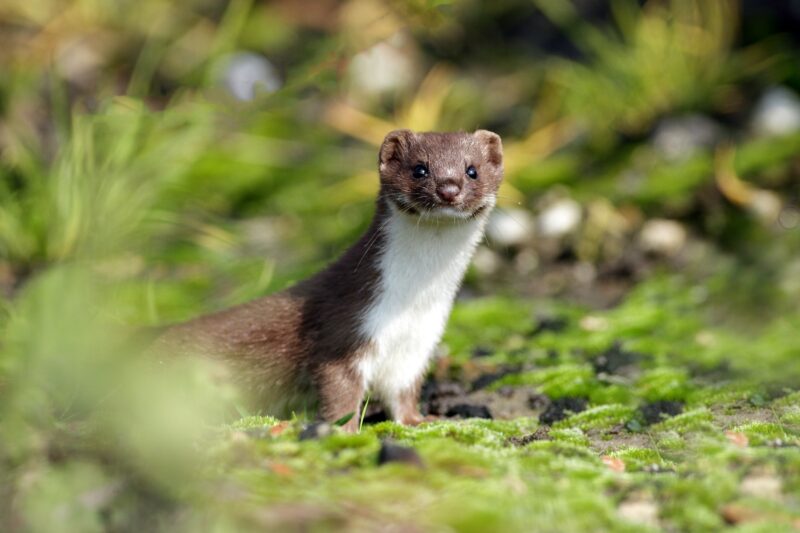Weasels, known for their lithe bodies and voracious appetites, stand as some of the most fascinating carnivorous mammals.
Despite their small stature, these creatures have a diverse and expansive diet, showcasing remarkable adaptability across various habitats.
Today, we will discuss the dietary habits of weasels, explaining their hunting techniques, nutritional needs, and the role they play in different ecosystems.
Weasel’s Diet
Weasels have a dietary range as diverse as their habitats. These tiny predators primarily feast on small mammals like mice, voles, and lemmings.
However, their diet isn’t restricted to these creatures. Weasels also prey on larger animals such as ducks, rabbits, and chickens.
Their ability to adapt their diet based on the availability of prey in their environment is a testament to their survival skills.
Hunting Techniques
The hunting prowess of weasels is remarkable. Despite their size, they are capable of attacking and consuming animals several times their size.
This ability stems from their technique of pouncing and biting at the base of the skull of their prey.
Weasels use a combination of scent and sight to track down their targets, displaying an incredible blend of agility and precision.
The Importance of a High-Calorie Diet
Due to their high metabolism and small size, weasels require a diet rich in calories. They consume about one-third of their body weight daily, a necessity for maintaining their energy levels.
This high-calorie intake is crucial for their survival, particularly in harsher climates where food may be scarce.
Weasels and Their Environment
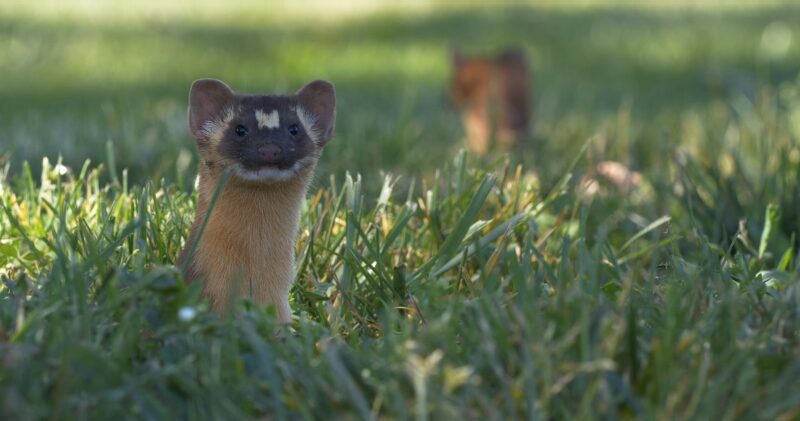
Weasels play a dual role in their ecosystems. On one hand, they help control rodent populations, which can be beneficial for agriculture and human settlements.
On the other, they can be problematic, especially when raiding hen houses or burrowing in human-inhabited areas.
Their presence in certain habitats is a delicate balance between being a natural pest controller and a potential nuisance.
Adapting to Changing Seasons
In winter, weasels’ behavior shifts significantly. They often raid the burrows of other animals and may move closer to human settlements in search of food.
This seasonal change in behavior highlights their adaptability and the lengths they go to for survival.
Interactions with Humans
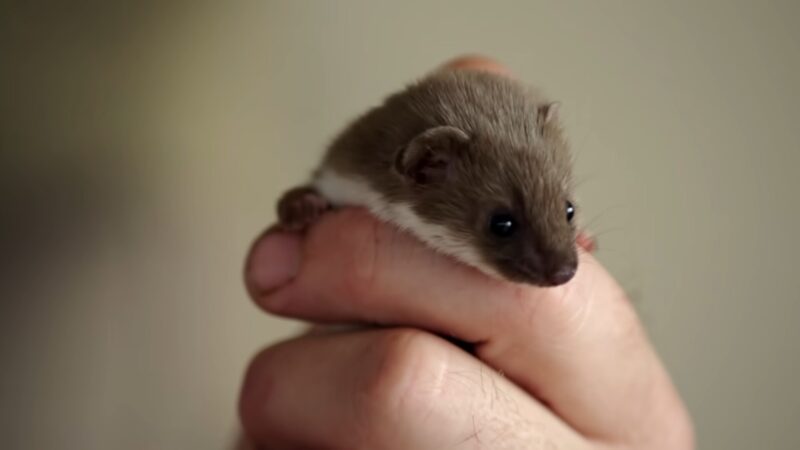
In some regions, weasels have been introduced as a form of pest control. This strategy leverages their natural hunting skills to manage rodent populations.
However, their interaction with human environments is not without challenges, as they can sometimes disrupt local ecosystems and poultry farms.
The Lifecycle
The early life of weasels, or ‘kittens,’ begins with a diet of their mother’s milk. As they grow, they gradually transition to solid food, learning to hunt and feed on meat.
This period is crucial for developing the skills they will use throughout their lives as adept hunters.
Predation and Threats
While weasels are skilled predators, they also face significant threats from other animals. Predators such as eagles, hawks, owls, snakes, foxes, cats, and dogs pose a constant danger.
These threats are a natural part of their ecosystem, shaping the weasel’s behavior and survival strategies.
Resilience and Adaptation
Weasels demonstrate incredible resilience and adaptability. Their ability to thrive in various environments, from dense forests to mountainous regions, underscores their effectiveness as predators.
This adaptability is a key factor in their survival and success as a species.
Economic Impact on Specific Regions
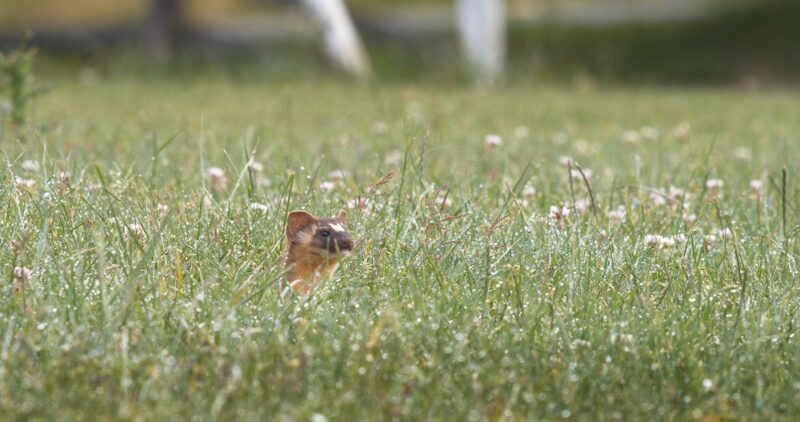
Weasels and Property Values in Montana
Interestingly, the presence of weasels and their impact on local ecosystems can indirectly influence property values in certain areas.
For example, Montana mountain towns, known for their scenic beauty and proximity to wildlife, have seen significant changes in property values.
Towns like Cameron and Big Sky have high median home values, partly attributed to their natural appeal and wildlife presence.
Cost of Living Considerations
In these regions, the cost of living, including utility and transportation costs, can vary significantly. For instance, Lakeside, Montana, enjoys utility costs 21% less than the national average.
However, the overall cost of living is higher. These variations in living expenses reflect the balance between enjoying natural beauty and managing the economic realities of living in such areas.
Weasels as Part of the Ecosystem
While weasels are not the sole factor influencing these economic changes, their role as part of the broader ecosystem cannot be overlooked.
Their impact on local wildlife and, by extension, on the appeal of these areas for residents and tourists is an interesting aspect of the economic dynamics in regions like Montana.
Challenges in Ecosystem Balance
While their hunting skills are advantageous in some contexts, weasels can also disrupt local ecosystems.
Their introduction to new environments, particularly where they are non-native, can lead to unforeseen consequences.
These include the decline of certain bird populations and the disruption of established food chains, highlighting the complexities of ecosystem management.
The Delicate Nature of Intervention
Human interventions, such as introducing weasels for pest control, require careful consideration. These actions can have lasting impacts on local wildlife and ecosystems.
It’s crucial to weigh the benefits against potential ecological risks, emphasizing the need for thorough research and responsible decision-making in wildlife management.
Conservation Efforts for Weasels
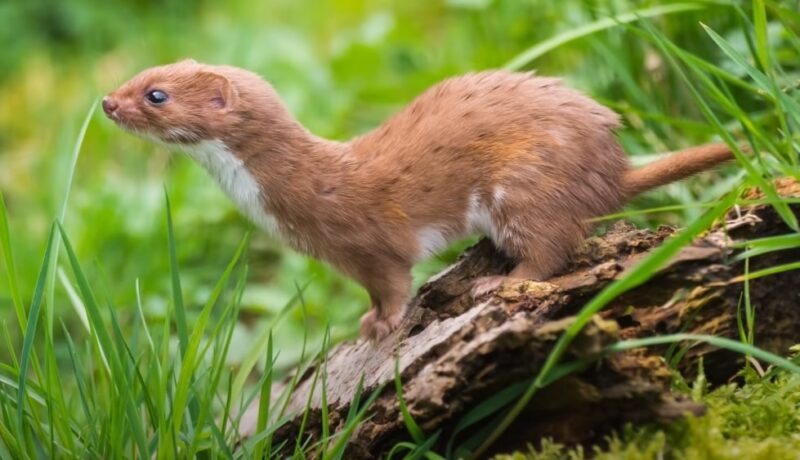
Threats to Populations
Despite their adaptability, weasels face various threats, including habitat loss, climate change, and predation.
These challenges can lead to declining populations in certain areas, underscoring the need for targeted conservation efforts to protect these species.
Conservation Initiatives
Conservation efforts for weasels include habitat preservation, research on population dynamics, and public awareness campaigns.
These initiatives aim to ensure the survival of weasel species, particularly those that are endangered or threatened.
Collaboration between conservationists, local communities, and governments is vital for the success of these efforts.
The Importance of Biodiversity
Preserving weasel populations is not just about protecting a single species but about maintaining biodiversity.
Weasels play a crucial role in their ecosystems, and their well-being is intertwined with the health of these systems.
Conservation efforts, therefore, contribute to the broader goal of preserving the richness and complexity of our natural world.
FAQs
Do weasels hibernate during winter?
No, they do not hibernate. They remain active throughout the year, adapting their hunting strategies to the availability of prey during different seasons.
Can weasels climb trees or swim?
Yes, they are proficient climbers and can swim well. These abilities aid them in hunting and escaping predators.
How long do weasels live in the wild?
In the wild, they typically live for about 1 to 3 years. However, their lifespan can be shorter due to predation and environmental factors.
Do weasels have any natural defenses against predators?
They rely on their agility and speed as natural defenses. They are also known to release a pungent odor from their anal glands to deter predators.
Are weasels solitary or social animals?
They are primarily solitary animals, especially when it comes to hunting. They come together mainly during the breeding season.
Can weasels be kept as pets?
While it’s not common, some people do keep them as pets. However, they require specialized care and a suitable environment to thrive, making them challenging for the average pet owner.
Final Words
Weasels, with their varied diet and remarkable hunting abilities, are fascinating subjects of study.
Their adaptability, impact on ecosystems, and even indirect influence on human economies make them a significant part of the natural world.
Having knowledge about these small yet mighty creatures offers insights into the intricate balance of nature and our place within it.
Related Posts:
- What Do Black Bears Eat? Insights into Their Diet
- What Do Foxes Eat? Wild & Urban Fox Diet Info & Habits
- How Do Opossums Survive Winter? Discover Their…
- Herbivore Teeth - Dental Adaptations for Plant-Based Diets
- Banded Water Snake: Facts, Diet, Habitat - Secrets…
- What Do Raccoons Eat? - How Their Diets Overlap and Differ


